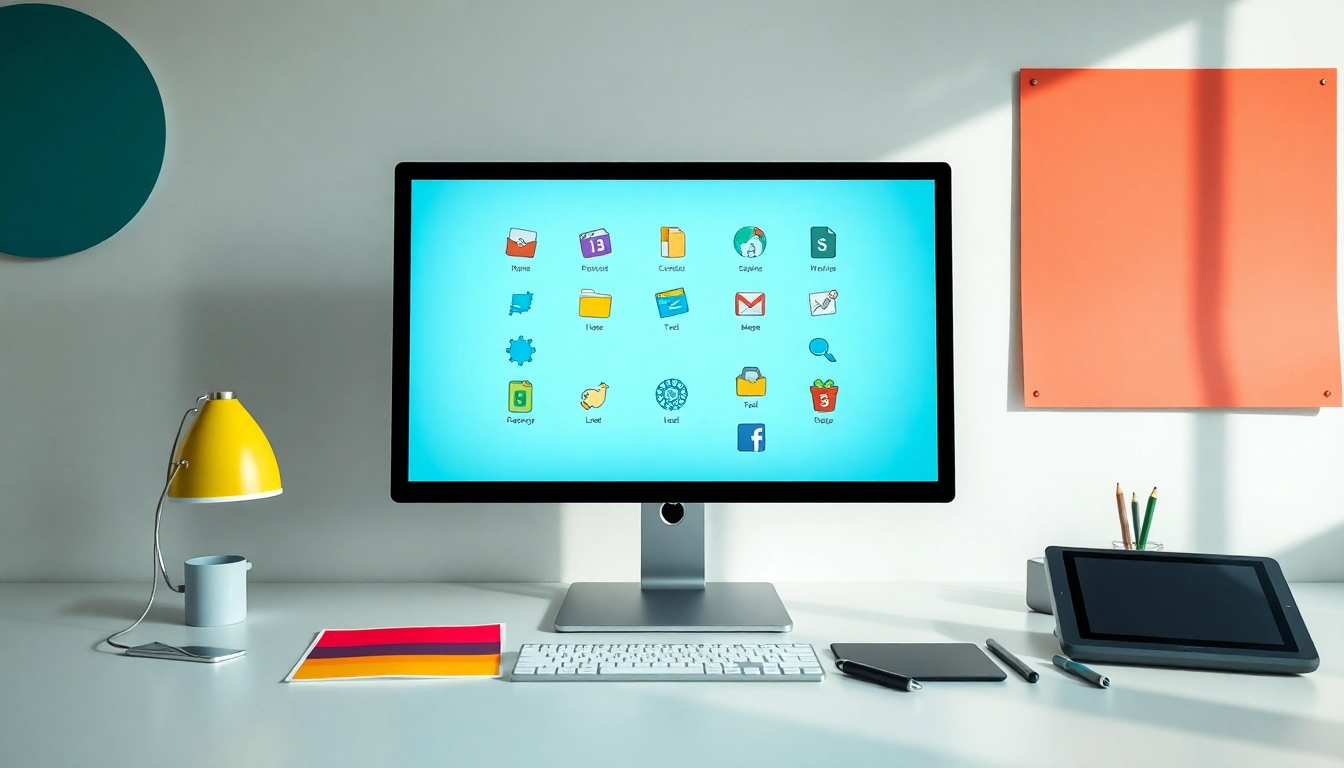The Importance of Icons in Communication
Icons are more than just decorative elements in design; they serve as powerful tools of communication across various media. Understanding the role of Icons allows creators to convey messages quickly and effectively, making them essential in user interfaces, branding, and visual storytelling. The visual language that icons provide transcends linguistic barriers, creating a universal method for information sharing.
Symbols and Their Meaning
Symbols can evoke emotions, convey actions, and represent complex concepts at a glance. Each icon carries intrinsic meaning derived from cultural contexts and shared experiences. For example, a heart symbolizes love, while a magnifying glass often signifies searching or exploring. The effectiveness of icons hinges on their ability to communicate these meanings without the need for explanatory text, making them invaluable in designs where space is limited or for audiences that speak different languages.
The Role of Icons in User Experience
In user interface design, the strategic integration of icons enhances the overall user experience (UX). Icons guide users through an interface by visually representing actions such as ‘edit’, ‘delete’, or ‘add to cart’. A well-designed icon can reduce cognitive load, helping users process information faster. Additionally, consistent iconography can contribute to a more cohesive design language, ensuring that users can intuitively navigate web pages or applications.
How Icons Enhance Visual Content
Icons play a significant role in visual storytelling. They can break up text-heavy content, making it more approachable and visually appealing. For example, blogs often use icons to illustrate key points or to create visual hierarchies that enhance readability. Furthermore, icons can be used in infographics to summarize data succinctly and engagingly. This combination of clarity and aesthetic appeal makes icons a powerful tool in any visual content strategy.
Types of Icons and Their Applications
Static vs Animated Icons
Icons can be categorized into static and animated types, each serving different purposes. Static icons are typically used for immediate recognition and provide a clear, straightforward representation of an action or concept. In contrast, animated icons add an element of dynamism, often used to guide user attention or indicate an ongoing process (e.g., loading icons). Understanding when to use static versus animated icons can significantly affect user engagement and the overall effectiveness of a design.
Web Design Icons
In web design, icons are crucial for enhancing navigation and improving user interaction. Icons help users quickly identify features, buttons, and links, making it easier to find information. Effective web design incorporates icons that are consistent in style and scale, ensuring that they match the overall aesthetic of the website. Moreover, web design icons must be responsive, adapting to various screen sizes without losing clarity or function.
Icons for Mobile Applications
For mobile applications, icons are even more critical than in web design due to the limited screen real estate. Mobile app icons must convey clear meanings while also being recognizable at smaller sizes. Creating a consistent iconography throughout the app for features such as settings, notifications, and navigation can greatly enhance user satisfaction and efficiency. Furthermore, it’s essential to consider touch target size when designing mobile icons to ensure they are easy to interact with.
Choosing the Right Icons for Your Needs
Understanding Your Audience
The selection of icons should be guided by an understanding of the target audience. Researching the demographics and preferences of users allows designers to choose icons that resonate and communicate effectively. For instance, a younger audience might respond better to contemporary and playful icon designs, while a professional audience may prefer sleek and minimalist icons that convey sophistication.
Design Consistency and Branding
Consistency in icon design is vital for maintaining brand identity. Icons should reflect the brand’s visual language, including color schemes, shapes, and styles. Whether integrating icons into a logo or creating a user interface, consistency reinforces brand recognition and trust among users. Custom icons designed specifically for a brand can distinguish it from competitors and provide a more personalized user experience.
Accessibility Considerations for Icons
Designing inclusive icons requires consideration for users with disabilities. To improve accessibility, icons should be supplemented with text labels or descriptions when necessary. Additionally, using high-contrast colors ensures that icons remain visible to those with visual impairments. Testing the icons with diverse user groups can also help identify any accessibility issues that may arise, ensuring that all users can interact with the content effectively.
Designing Custom Icons
Key Design Principles to Follow
When creating custom icons, it’s essential to abide by key design principles such as simplicity, clarity, and relevance. Icons should be easily identifiable and convey their intended message without ambiguity. Employing a grid system can aid in achieving balance and alignment, while a limited color palette helps maintain a clean visual appearance. Iterative testing with users can also refine icon designs to ensure they meet user needs and expectations.
Tools for Creating Icons
Several design tools cater to creating custom icons. Software such as Adobe Illustrator, Sketch, and Figma offers robust features for vector-based design, allowing for scalable icons that maintain quality at various sizes. Additionally, online platforms like Canva or Iconfinder provide templates and resources that can expedite the icon design process. By leveraging these tools, designers can produce icons that are both functional and visually compelling.
Collaboration with Designers for Custom Projects
Working with professional designers can elevate the quality of custom icons. A designer’s expertise can ensure that icons are not only aesthetically pleasing but also functional and user-centered. Collaborating on projects allows for the exchange of ideas and feedback, leading to innovative icon solutions that might not emerge in isolation. Establishing clear communication and specifications from the outset is critical in guiding designers towards achieving the desired outcome.
Best Practices for Icon Usage and Implementation
Size and Scalability Considerations
Icons should be designed with scalability in mind, ensuring they look sharp and clear at any size. This is particularly important for responsive designs where the same icon may appear on screens of varying dimensions. Designers should consider the pixel density of different devices and create icons in multiple resolutions to cater to high-definition displays. Proper sizing can enhance user experience and maintain visual consistency across platforms.
File Formats for Optimal Quality
Choosing the right file format for icons is essential for maintaining quality and performance. Vector formats such as SVG are ideal for web because they are resolution-independent, meaning they can scale without losing quality. For raster images, PNG is often preferred due to its support for transparency and high-quality rendering. Understanding the advantages of each format can help designers select the most appropriate one for their specific use case.
A/B Testing Icons for Effectiveness
Conducting A/B testing with icons allows designers to determine which versions resonate better with users. By presenting different icon designs to segments of the audience, designers can measure user interactions and preferences. This data-driven approach enables designers to refine icons based on empirical evidence, enhancing overall user experience and satisfaction. Continuous testing and iteration are key to developing effective iconography.



